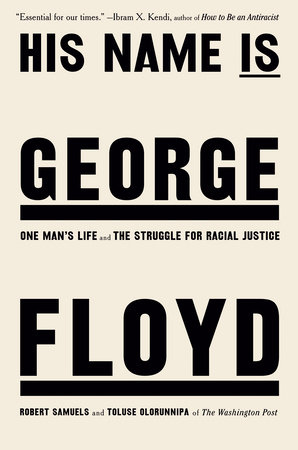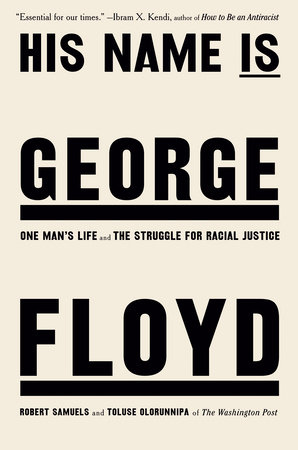The 2022 National Book Awards were announced this week. I expect I am not alone in adding the winners in fiction and nonfiction to my wish list and handing it, not very discreetly, to my gift-giver-in-residence. Come late December, I hope to have the winners — "The Rabbit Hutch" by Tess Gunty and "South to America" by Imani Perry — stacked on the table next to my reading chair, and then hope to protect some serious reading time.
Over the years, I have come to thrill just as much over the list of finalists. I look to the five finalists and, before that, the Longlist of 10, to reflect the range of topics and voices that rise to the top each year. I poke through them for topics of special interest to me, and as a thoughtful snapshot of the times we're living in. For some real fun, or a great research project, you can go back to the start of the awards in 1950 and trace it forward: How did our story sensibilities change over time? Whose voices were left out and when were they given the keys to our literary clubhouse? What does the fiction say about our culture over the years, and what does the nonfiction say about what mattered in society?
A bonus of the finalist list comes from Literary Hub, which this year (and maybe in previous years) did rapid-fire interviews with the finalists. They asked the authors of all five books in all five categories (fiction, nonfiction, poetry, translated literature and young people's literature) five questions, which probe the same things that vex, inspire and inform anyone who writes. Think of it: 25 masterful writers sharing their wisdom and, yes, struggles. (A frequent question is about favorite ways to procrastinate.) Even if all you read are the interviews with authors of the five nonfiction books, you are still getting a super-smart Cliffs Notes to the journalistic process.
 A shout-out to The Washington Post's Robert Samuels and Toluse Olorunnipa whose co-authored book, "His Name is George Floyd: One Man's Life and the Struggle for Racial Justice," was a finalist this year. Their flash interviews in LitHub are a treat. Both were on the Post team that reported "George Floyd's America," a multi-part series that explored, often in narrative form, the facets of systemic racism that led to Floyd's death under the knee of a cop in Minneapolis. Storyboard did a two-parter how the project came together, from idea to reporting to writing. One post was an interview with Steven Ginsberg, who edited the series. The other was a deep interview with Samuels and annotation of his particular part of the series — a profile framed in the last several months of Floyd's life and how a lifetime of racism undermined his physical and mental health.
A shout-out to The Washington Post's Robert Samuels and Toluse Olorunnipa whose co-authored book, "His Name is George Floyd: One Man's Life and the Struggle for Racial Justice," was a finalist this year. Their flash interviews in LitHub are a treat. Both were on the Post team that reported "George Floyd's America," a multi-part series that explored, often in narrative form, the facets of systemic racism that led to Floyd's death under the knee of a cop in Minneapolis. Storyboard did a two-parter how the project came together, from idea to reporting to writing. One post was an interview with Steven Ginsberg, who edited the series. The other was a deep interview with Samuels and annotation of his particular part of the series — a profile framed in the last several months of Floyd's life and how a lifetime of racism undermined his physical and mental health.
Over the years, I have come to thrill just as much over the list of finalists. I look to the five finalists and, before that, the Longlist of 10, to reflect the range of topics and voices that rise to the top each year. I poke through them for topics of special interest to me, and as a thoughtful snapshot of the times we're living in. For some real fun, or a great research project, you can go back to the start of the awards in 1950 and trace it forward: How did our story sensibilities change over time? Whose voices were left out and when were they given the keys to our literary clubhouse? What does the fiction say about our culture over the years, and what does the nonfiction say about what mattered in society?
A bonus of the finalist list comes from Literary Hub, which this year (and maybe in previous years) did rapid-fire interviews with the finalists. They asked the authors of all five books in all five categories (fiction, nonfiction, poetry, translated literature and young people's literature) five questions, which probe the same things that vex, inspire and inform anyone who writes. Think of it: 25 masterful writers sharing their wisdom and, yes, struggles. (A frequent question is about favorite ways to procrastinate.) Even if all you read are the interviews with authors of the five nonfiction books, you are still getting a super-smart Cliffs Notes to the journalistic process.
 A shout-out to The Washington Post's Robert Samuels and Toluse Olorunnipa whose co-authored book, "His Name is George Floyd: One Man's Life and the Struggle for Racial Justice," was a finalist this year. Their flash interviews in LitHub are a treat. Both were on the Post team that reported "George Floyd's America," a multi-part series that explored, often in narrative form, the facets of systemic racism that led to Floyd's death under the knee of a cop in Minneapolis. Storyboard did a two-parter how the project came together, from idea to reporting to writing. One post was an interview with Steven Ginsberg, who edited the series. The other was a deep interview with Samuels and annotation of his particular part of the series — a profile framed in the last several months of Floyd's life and how a lifetime of racism undermined his physical and mental health.
A shout-out to The Washington Post's Robert Samuels and Toluse Olorunnipa whose co-authored book, "His Name is George Floyd: One Man's Life and the Struggle for Racial Justice," was a finalist this year. Their flash interviews in LitHub are a treat. Both were on the Post team that reported "George Floyd's America," a multi-part series that explored, often in narrative form, the facets of systemic racism that led to Floyd's death under the knee of a cop in Minneapolis. Storyboard did a two-parter how the project came together, from idea to reporting to writing. One post was an interview with Steven Ginsberg, who edited the series. The other was a deep interview with Samuels and annotation of his particular part of the series — a profile framed in the last several months of Floyd's life and how a lifetime of racism undermined his physical and mental health.



